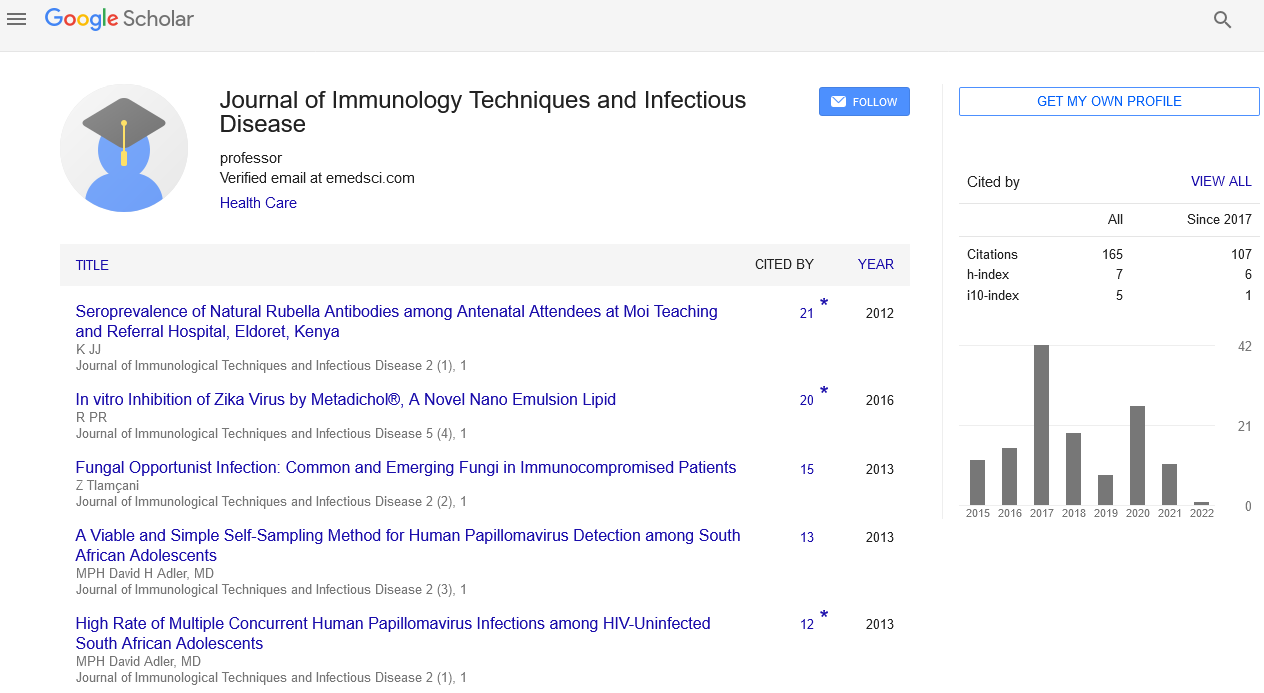Do women have higher rates of HIV infection? A study on HIV infection in blood donors of Alborz province in Iran
Kabir K1, kalantar E2 and Hosseini H3
1Department of Social Medicine 2Department of Microbiology and Immunology 3Alborz Blood Transfusion Organization Alborz University of Medical Sciences, Iran
: J Immunol Tech Infect Dis
Abstract
Background: HIV/AIDS is one of major world public health issue, which continues to get people’s lives while new cases are being infected each year. In 2013, 1.5 million people have died fromHIV and 2.5 million new infections have happened.People with different demographic characteristics attend in blood donation, which creates an opportunity for estimation of HIV frequency and its risk factors. We studied data on HIV infection of blood donors from 2011-2014, to estimate frequency of HIV infection and some of its risk factors in Alborz province. Materials and Methods: In a cross sectional design, data on all blood donors in Alborz province within 4 years from March 2011 to 2015 were studied. The blood transfusion organization registries used for data collection.During the study period, People donated 202814 times in Alborz province. After deleting duplicates (repeated), 109817 people entered the study.Data were described within 95% confidence interval and Chi square, Fisher exact test and logistic regression(backward Stepwise -Wald) used for comparisons and calculating adjusted odds ratios. Findings: During the study period, 109817 people donated blood. The mean age of donors was 35.8 (±9.94) years and most of them (93.7%) were males. During these 4 years, 15 donors confirmed for HIV infection. The rate of infection was 13.66 in 100,000 populations. Rate of HIV infection in women (43.33 in 100,000) and men (11.66 in 100,000) was different (P value<0.042). people who were graduated from high school or academic educations(7.91 in 100,000) had a lower rates than people less than high school graduation( p<0.022). Adjusted odds ratios indicate that female gender (adjusted OR=3.73, p< 0.042) and education level less than high school graduation (adjusted OR=4.26, p< 0.009) increase the odds of HIV positivity in blood donors. Conclusion: Rate of HIV infection in blood donors is low which reflects relatively lower rate of infection in our society and cause more blood transfusion safety. Higher HIV infection frequencies in female donors, needs more attention. We don’t know that this pattern can be seen in other regions of the country; but this may be a result of changing pattern of disease transmission from Injecting drug use to heterosexual sex activities. We recommend a wider national research based on available data from blood donation and/or designing studies to better estimate the frequency and its risk factors.
Biography
E mail: kookoo1350@yahoo.com
 Spanish
Spanish  Chinese
Chinese  Russian
Russian  German
German  French
French  Japanese
Japanese  Portuguese
Portuguese  Hindi
Hindi 
